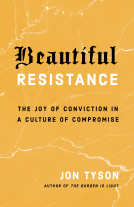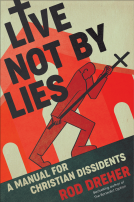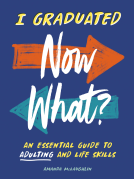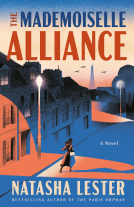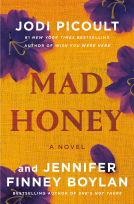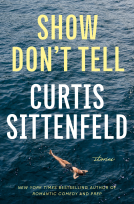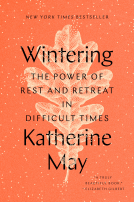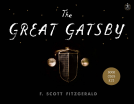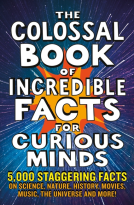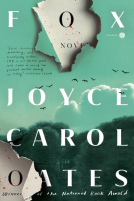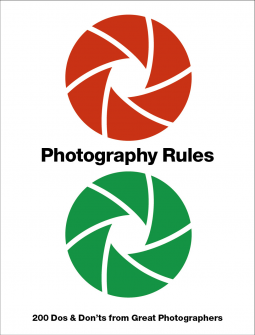
Photography Rules
Essential Dos and Don'ts from Great Photographers
by Paul Lowe
This title was previously available on NetGalley and is now archived.
Send NetGalley books directly to your Kindle or Kindle app
1
To read on a Kindle or Kindle app, please add kindle@netgalley.com as an approved email address to receive files in your Amazon account. Click here for step-by-step instructions.
2
Also find your Kindle email address within your Amazon account, and enter it here.
Pub Date Aug 04 2020 | Archive Date May 04 2020
Quarto Publishing Group - White Lion Publishing | Frances Lincoln
Talking about this book? Use #PhotographyRules #NetGalley. More hashtag tips!
Description
Over 150 essential mantras for anyone interested in taking good pictures.
Get close, take bad pictures, blur is your friend, use natural light, don't delete, be selective, stare – every photographer works by their own rules. These rules can be practical (know your lenses) or inspirational (break through barriers), but, as we all, know rules are also made for breaking. Providing insider tips inspired by the greatest photographers from history and original pieces of advice from some of the most well-respected living professionals, Paul Lowe (expert photographer and lecturer) presents over 150 bite-sized dos and don'ts from the likes of Dorothea Lange, Don McCullin, Martin Parr, Rankin and Richard Avedon. Covering all aspects of photography – from making photographs, to being a photographer and professional practice – this book combines inspiration with practical tips you can experiment with.
Available Editions
| EDITION | Other Format |
| ISBN | 9780711242586 |
| PRICE | $24.99 (USD) |
| PAGES | 240 |
Featured Reviews
 Susie F, Reviewer
Susie F, Reviewer
Weirdly this book made me feel like I was at an art gallery. Brilliant and unusual images with thorough explanations of what works and what doesn’t. I’m not a photographer, but as a novice, this book is great. And it's not just a coffee table book either, like some can be!
Thank you NetGalley for my complimentary copy in return for my honest review.
This book has some great tips and things to help you think outside the box. Personally, I don’t love the title because there shouldn’t be any “rules” to photography, it’s all about your own creativity and what you prefer. While I like some of the tips, like “don’t overthink”, there is a ton of words for this being a photography book. It’s a great book if you’re looking for inspiration or to gain more confidence, but maybe not if you’re looking to learn the basics.
 jc C, Educator
jc C, Educator
This is an unusual and inspirational book on photography. It has a carefully selected photograph to demonstrate each tip or point, enabling you to focus and take in the information. The tips are suggestions about what works for various successful photographers and the book is a guide rather than a set of rules. You can experiment with any suggestions that appeal to you.
 Reviewer 630695
Reviewer 630695
A great look at notable photos, many with notes from the photographer as to how they achieved the shot. Tips on the techniques and technical aspects are also given to help budding photographers achieve a similar effect. Great addition to any photographer’s bookshelf.
 Educator 562025
Educator 562025
Excellent collection of valuable tips from photography professionals with examples in one place. As reiterated by many of them, the key to improve is to apply these tips and take lots of photos!
FTC disclosure: I would like to thank Quarto Publishing Group - White Lion Publishing for providing me with an advance reader copy via access to the galley for free through the NetGalley program.
This was the perfect book for me. It met me right where I was at. I’d recommend it to any photographer with similar sentiments to me as it provided a unique, thoughtful compilation of the great advice and a well-tailored focus of image examples out there.
It was refreshing to read and brought a distinguished and inspirational element to the photography section of my bookshelf.
It wasn’t a sell on equipment branding and specs, or a historical timeline of photography through the ages, an exhaustive technical how to, a recycled earrangement of seen all, heard photography aspects, nor was it just exclusive insight into one author’s personal experiences.
Those things certainly all have their place in photography but I found this particular book to be an insightful, accessible compilation piece, having taken the main rules of photography (both creative and technical) and concisely honing in on the main driving points, taking the best of each concept as it displayed advice and image example of each.
From that standpoint, the author’s foreword discussed the meaning and principles behind the rules as incorporated into the title and content which I really appreciated since it clarified questions that I had. I think it was excellent advice to recommend integrating rules into your practice and break them one at a time to see what new things you can create.
So from that, each rule was thoughtfully curated, showing how they may or may not be broken to create compelling images.
I myself, feel I haven’t taken the time to be able to admire and understand the works by photographers. So I really enjoyed the quotes, the discussions, the theoretical concepts explained by each as they showcased some of their most powerful and iconic photos.
Perhaps it may be easier for readers to decide if this book is for them by telling about me.
To give some perspective, I have been taking photographs on and off for the better part of my life, mostly at my own amusement. I’m familiar with film and digital. Shooting mostly scenes of landscapes, wildlife, flowers, books, and recipes.
I have had limited formal training and never really kept up with the digital era and post processing achievements of today. I also haven’t kept up with the notoriety and skillset of photographers in recognition of their most famous works and the artistry/techniques they bring to the table.
However for the past year and a half I’ve sought to better my photography and challenge myself.
Concepts I really took away: not shying away from motion blur and better celebrating the movement to show the energy of a scene, choosing a subject regardless of figures, and definitely paying attention to lines and lighting more.
Also to break some terrible habits I’ve developed. Since not having been on social media for 6 months, especially not having been on Instagram, I feel more compelled not to tailor images to the constraints of the platform anymore. I guess I didn’t realize how much I catered my images to it with its square tiling, cutting off of margins, leaving me to frame images with an extra bumper of a gap and dead centering.
Techniques I’d like to try as a result of reading this book include: using the tripod more, practicing more slow shutter techniques, and trying a hand at photo composites.
I also liked the vast overview of concepts especially from a journalistic point of view since my knowledge and experience with that is minimal. I also liked how this book was organized and was easy to understand. Tidbits on referential connection, work submissions, publishing, ethics, captioning, working with models, even working in traumatic situations and image management were wonderful bonuses in this book.
Very enjoyable, I learned a lot!
 Pam S, Librarian
Pam S, Librarian
Just getting back into photography after a 10 year hiatus and this was just the shot in the arm I needed. I was reminded of the basics that are out of practice but also learned a lot of new things and this book really got my creative juices flowing. Now that the weather is nice I am going to go socially distance myself with some beautiful scenery and review my notes and take lots of pictures.
First of all, I'd like to thank Netgalley and White Lion Publishing for sharing an advanced reader copy in exchange for a fair review.
The book isn't exactly a how-to book but it does cover a lot of "rules" that come from a wide variety of photographers on what makes their photography work. Within those "rules" I think most of us will find suggestions that will work for us. What was really nice about the book was the variety of photos included, with samples from many prominent photographers. It helps to demonstrate some of the "rules" that the book includes. Also included are discussions about the rules to give more context as to reasoning. None of these sections are long so it's not an in-depth sort of thing but does cover a broad collection of advice.
Overall I give this book a solid 3.5 stars.
Photography Rules is filled with essential tips for photographers, split into three sections; making photographs, being a photographer and professional practice. Each 'rule' is illustrated by a relevant photograph and an explanation of the theory behind the rule. I liked that some of the rules were contradictory and subjective, showing that there is no correct and fixed way of doing photography but instead outlines how different people do photography. By providing diverse viewpoints, this book lets the reader choose the rules they identify with and figure out how to do photography their own way.
The book is suitable for all levels from amateur to professional. As someone who likes to take photographs (I wouldn't call myself a photographer - barely even an amateur!) this was a really inspiring read for me. The professional practice section was an insight into a side of photography I know nothing about and something I have never seen in a photography book. I thought this book would be overwhelming but it wasn't - it's concerned with ideas and inspiration as opposed to just technical aspects of photography, and is very easy to understand. It's motivated me to get out there and take more photos.
An inspirational, informative, and practical compilation of photography advice from current and past photographers. Some of the "rules" will be familiar, some seem to contradict others, and that's what makes this book so interesting. It doesn't present just one way of thinking about photography or suggest there is only one way to make a successful photo, but offers different takes from a diverse group of photographers.
Well-organized and designed, with plenty of photos for inspiration, the book is divided into three sections: making photographs, being a photographer, and professional practice. The first two sections feel pretty timeless and are good reminders for even experienced photographers. The third section is more practical and feels very current, with advice on kick-starting projects, making career goals, and more. It also felt very unique to this book, as so many photography books I've read tend to shy away from these discussions.
I will definitely be keeping an eye out for this one when it's available!
 Shelly S, Reviewer
Shelly S, Reviewer
This book gives exactly what it says on the cover; essential dos and don'ts from great photographers. Even though the camera equipment spoken about is older, the information is still relevant. The only thing I didn't really like was that it seemed to be mostly photojournalism. Other than that, lots of tips for all budding photographers.
 Amanda D, Reviewer
Amanda D, Reviewer
I very much enjoyed this book, and I think that anyone interested in photography could find something to take away to use to improve their work. I also enjoyed the visuals and descriptions. Each page or two has a "rule" followed by advice or thinking either from or based on the work of a photographer, and most of the pages also include an example image (in full color except for intentionally black and white images). The "rules" are divided into sections - Making Photographs (tips for taking pictures), Being a Photographer (tips for creativity, approach, and finding your personal style), and Professional Practice (focusing more on the business aspects of being a photographer).
I received an ARC in exchange for an honest review.
Readers who liked this book also liked:
Jodi Picoult; Jennifer Finney Boylan
General Fiction (Adult), Literary Fiction, Women's Fiction
Nigel Henbest; Simon Brew; Sarah Tomley; Ken Okona-Mensah; Tom Parfitt; Trevor Davies; Chas Newkey-Burden
Entertainment & Pop Culture, Humor & Satire, Nonfiction (Adult)
